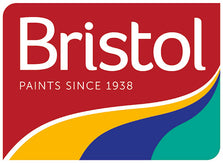
What techniques can I use to reduce visible brush strokes?
Reducing visible brush strokes is key to achieving a professional-looking finish. Here are some techniques and tips to help minimize or eliminate brush marks:
-
Use the Right Brush:
- Invest in a high-quality brush. Synthetic brushes (usually nylon or polyester) are generally recommended for water-based paints, while natural bristle brushes are best for oil-based paints.
- Choose a brush that's appropriate for the task. For example, angled brushes are often used for trim and detail work, while flat brushes can cover larger surfaces more effectively.
-
Brush Preparation:
- Before using a new brush, give it a good pre-wash. This will remove any loose bristles and manufacturer's residue.
- If using water-based paint, dampen the brush slightly before dipping it into the paint. This can help the paint flow more smoothly.
-
Paint Preparation:
- Stir the paint well before using and occasionally during use.
- Thinning the paint slightly can help. However, always follow the manufacturer's recommendations. Adding a paint conditioner (like Floetrol for latex paints or Penetrol for oil-based paints) can improve paint flow and leveling.
-
Application Techniques:
- Don't overload the brush. Dip the brush about 1/3 to 1/2 way into the paint, and tap the sides of the bucket to remove excess paint.
- Apply paint in long, smooth strokes. Always paint in the direction of the wood grain when working on wood surfaces.
- After applying the paint, go over the freshly painted area with light, smooth strokes (often referred to as "laying off"). This evens out the paint and removes brush marks.
- Try to maintain a "wet edge." This means you should overlap onto your previous strokes while they are still wet to avoid lines and marks.
-
Use the Right Paint:
- Some paints are self-leveling, meaning they smooth out on their own as they dry, reducing brush marks.
- Glossier paints can show brush strokes more than matte or flat paints. If you struggle with visible brush strokes, you might consider opting for a flatter sheen.
-
Environmental Conditions:
- Extremely hot, cold, or humid conditions can affect paint drying time and consistency. Painting in moderate conditions can help reduce brush marks.
- Avoid painting in direct sunlight as it can cause the paint to dry too quickly, leading to visible brush strokes.
-
Sanding Between Coats:
- For surfaces like cabinets or furniture where a super-smooth finish is desired, lightly sand between coats with a fine-grit sandpaper (220 grit or finer). This can smooth out any imperfections or brush marks. Remember to remove any dust before applying the next coat.
-
Use a Roller:
- If you're painting a larger surface, consider using a foam roller, which can provide a smoother finish without brush marks. This won't be suitable for all surfaces but can be perfect for doors, for instance.
By paying attention to your technique and using the right tools and materials, you can significantly reduce or eliminate visible brush strokes in your paint projects.
